From Lee Miller to the great design of the 20th century. Three exhibitions at the Museum für Gestaltung in Zurich.
A triptych of exhibitions accompanies visitors to Zurich ’s Museum für Gestaltung this fall between the photography of Lee Miller, the museum’s collection as seen through the eyes of Ticino-based graphic designer Bruno Monguzzi, and an innovative experience of the space aimed at all the senses. The exhibitions are Lee Miller. A photographer between war and glamour (from Aug. 28, 2020 to Jan. 3, 2021), MyCollection. Bruno Monguzzi (Oct. 23, 2020 to Feb. 14, 2021) and Total Space (Oct. 23, 2020 to June 20, 2021).
It begins with the exhibition dedicated to Lee Miller (Poughkeepsie, New York, 1907 - Chiddingly, 1977), curated by Karin Gimmi and Daniel Blochwitz. It is a monographic exhibition that covers all of Lee Miller’s creative periods, thanks to the presence of 200 photographs on loan from the Lee Miller Archives in East Sussex (UK). The exhibition aims to celebrate anniversary number 75 of the end of World War II, a disaster that cost the lives of 60 million people: the narrative starts precisely from Lee Miller’s iconic self-portrait in Hitler’s bathtub, which toured the world after its first publication in 1945. Above all, however, the exhibition intends to dwell on the multifaceted aspect of Lee Miller’s production, showing how her reportage from war zones went hand in hand with the glamorous imagery that surrounded her aura and to which she lent her work: both of these visual worlds have in common Lee Miller’s surrealist vision and the fact that the photographer in both cases had worked for Vogue magazine. And again, the exhibition seeks to portray Lee Miller as an extraordinary photographer and as an emancipated, modern woman: her career, the curators argue, would be exceptional even today, and certain episodes that punctuated it are worthy of a film.
A career that began in the fashion world: Lee Miller, the daughter of an amateur photographer, took her first steps in the business in 1920s New York, where she worked as a model from the age of 19, specifically for Vogue magazine (during these years she posed for some of the greatest photographers of the time). In 1929, Lee Miller emigrated to Europe where she switched to the opposite side of the camera and joined the Parisian art scene. She thus came into contact with Man Ray, who played the role of a very important mentor for her, so much so that, from being his assisstant and his muse, Lee Miller soon became an independent artist who, close to the Surrealists, developed an unusual and often provocative artistic language that was able to convey her worldview. Then, in the 1930s, she returned to New York, and then moved to Cairo where she married Egyptian businessman Aziz Eloui Bey, and then again to London on the eve of World War II, where she moved with her new partner, artist Roland Penrose. In 1942 she became a correspondent for the U.S. Army and, in this capacity, followed the Allied troops in 1944 from Normandy to Germany via Paris. It was precisely her war reportage that won her worldwide fame, so much so that her name soon entered among those of the most acclaimed international photojournalists.
Her photographic practice, shaped by Surrealism, enabled her to photograph with a wholly original approach the tragic and horrific landscapes of the concentration camps of Dachau and Buchenwald, which had just been liberated by the Allies: through the language of the absurd, Lee Miller wanted to demonstrate all the horrors of war, without censorship. At the end of the conflict, however, Lee Miller returned to England traumatized by what he had seen and stopped working almost entirely as a photojournalist, devoting himself from time to time to lighter productions, such as portraits of artists. And in the last two decades of his career, Lee Miller reinvented himself--as a chef: in fact, he dabbled in organizing cooking events and writing original recipes.
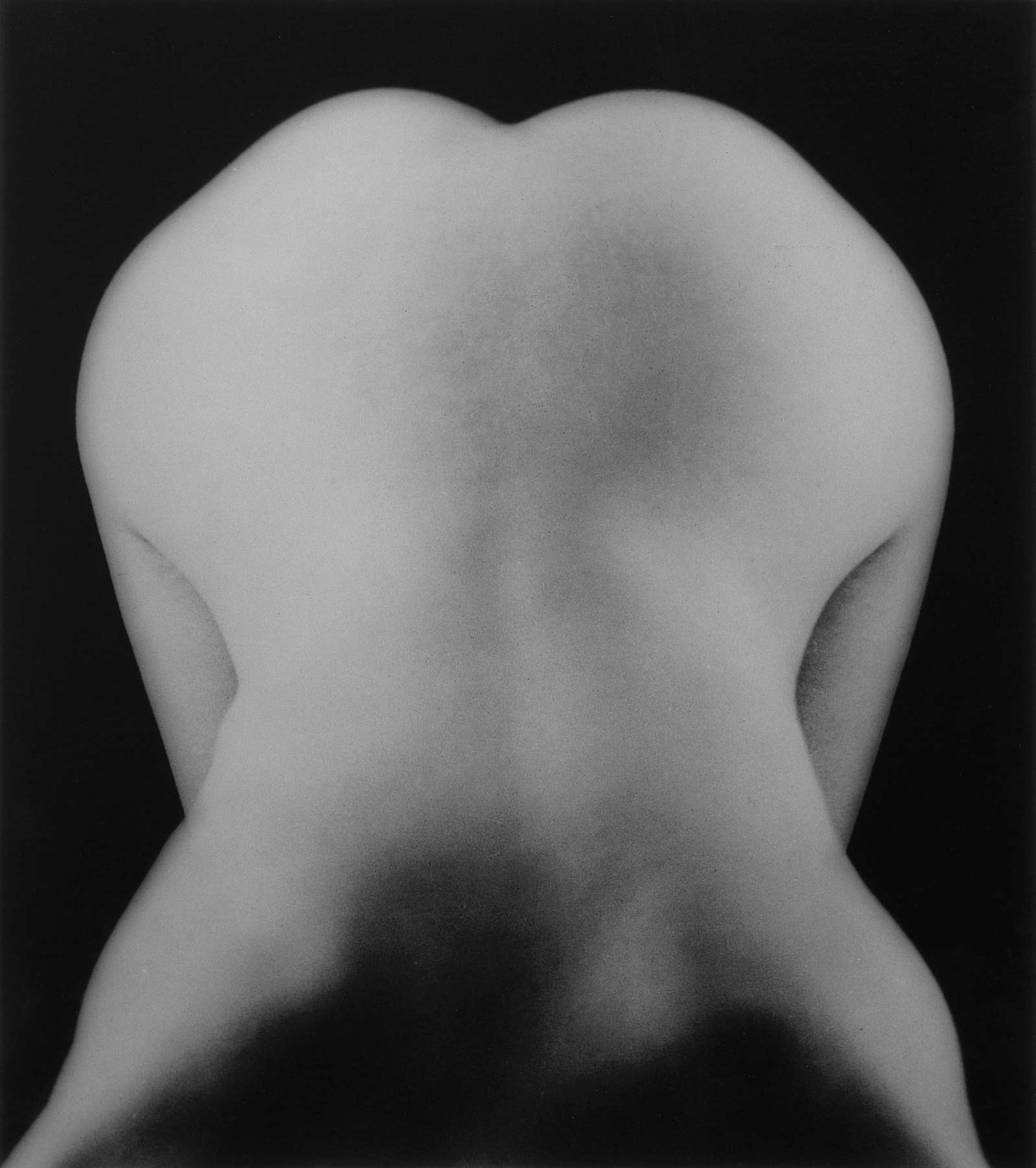 |
| Lee Miller, Nude bent forward (possibly Noma Rathner) (Paris, 1930) © Lee Miller Archives England 2020 |
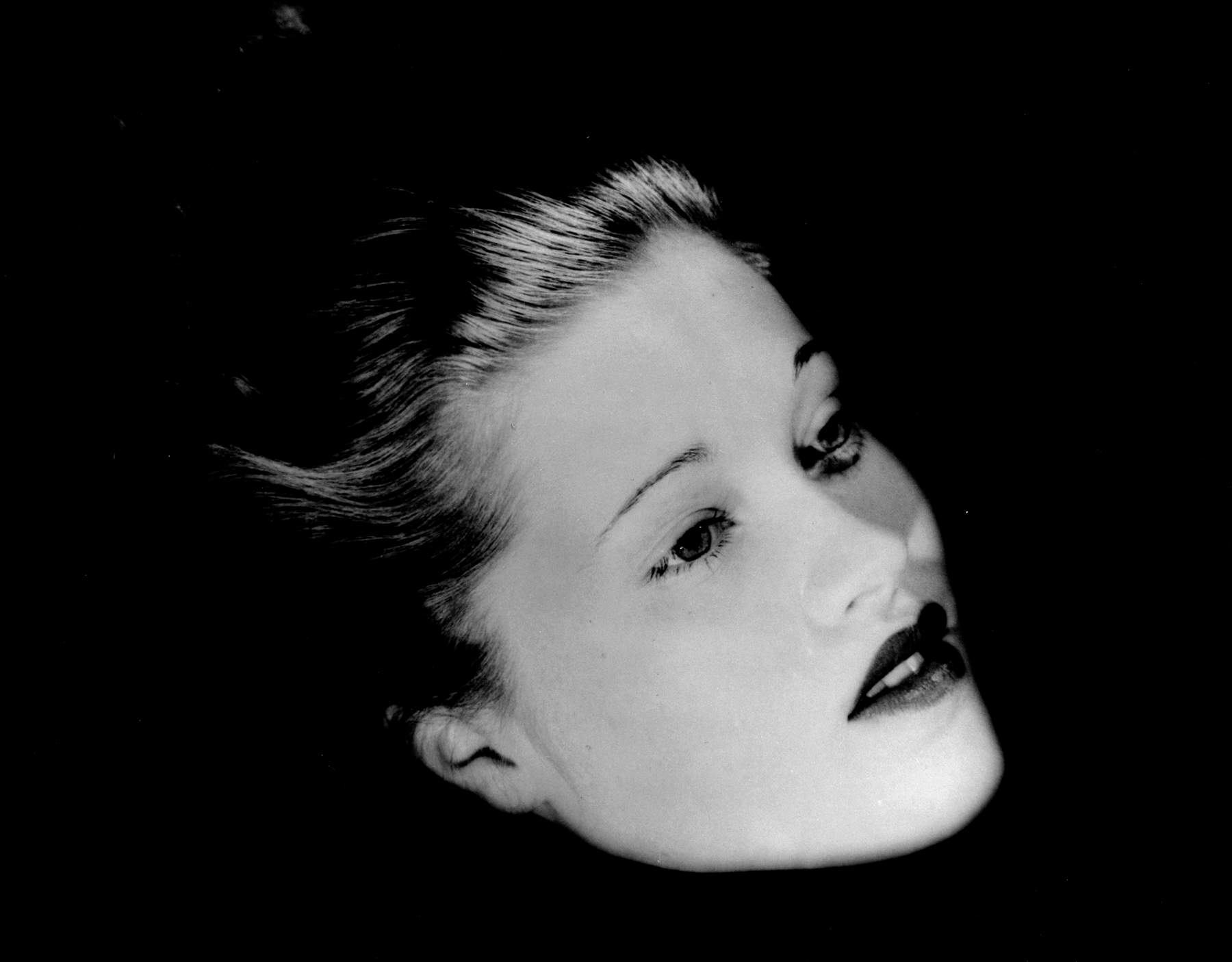 |
| Lee Miller, Floating head, Mary Taylor (New York, 1933). © Lee Miller Archives England 2020 |
In contrast, the exhibition by Bruno Monguzzi (Mendrisio, 1941), from October 23, 2020 to February 14, 2021, aims to present a selection of objects drawn from the collections of the Museum für Gestaltung, which holds some 500,000 objects in its collections of design, graphics, applied arts, and posters, with a choice made by the Mendrisio-based designer himself. Given the size of its collection, the museum, in 2016, decided to start the MyCollection project, which with Monguzzi reaches its third stage, after the exhibitions dedicated to the British designer Jasper Morrison and the Austrian graphic designer and filmmaker Stefan Sagmeister: the idea is to call internationally renowned designers and graphic designers to the museum to explore the museum’s archives by setting up their own personal exhibition starting right from the collection. The idea is for visitors to rediscover the museum’s collections with new eyes, thanks to the looks of curators who from time to time are invited to work with the museum’s objects.
For his exhibition, presented in an understated setting developed by Monguzzi himself, the graphic designer has chosen to combine traditional craftsmanship and modern design in a narrative that is meant to be timeless and able to speak to a younger audience as well. On display are objects by great designers of the past such as Marcel Breuer, Charles and Ray Eames, Charlotte Perriand, Max Bill, Adolphe Mouron Cassandre, and El Lissitzky. Also accompanying the exhibition are texts that include reflections on the creative process of Monguzzi and the artists chosen for the show. But that’s not all, because there is also an... exhibition within the exhibition: the public will be able to admire a selection of Bruno Monguzzi’s cultural posters, designed at the same time to draw the public’s attention, to fascinate and to inform them.
Bruno Monguzzi trained at theÉcole des arts décoratifs in Geneva where he obtained a diploma in graphic design, and then moved to London where he continued his education by taking courses in typography, photography and psychology of perception at St. Martin School of Art, the Central School of Art & Design and the London College of Printing. Monguzzi worked for many years for Studio Boggeri in Milan, mostly in the field of editorial graphics, dealing mainly with exhibition layouts and cultural poster design, while also teaching for nearly 30 years at the Scholastic Center for Artistic Industries (CSIA) in Lugano and lecturing and teaching in various parts of the world. In 1983 Monguzzi won the competition for the institutional identity and signage of the Musée d’Orsay in Paris, submitting a design created together with Gae Aulenti and the Visuel Design Jean Widmer atelier in Paris, winning the Janus Prize. In 2003, the Royal Society of Art in London awarded Monguzzi the title of Honorary Royal Designer of Industry.
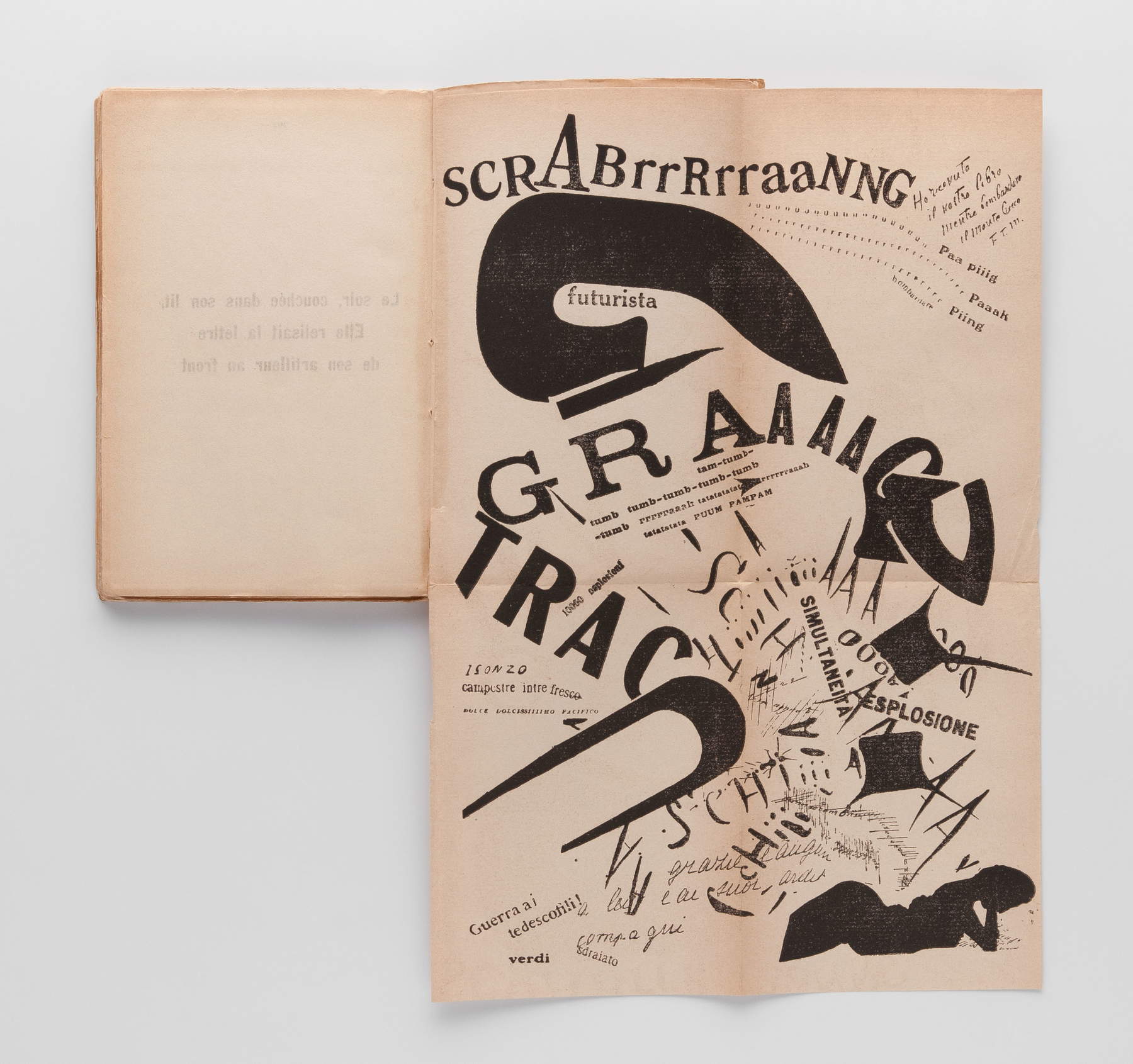 |
| Filippo Tomaso Marinetti, Words in Freedom (1919; Zurich, Museum für Gestaltung, Graphic Collection, ZHdK) |
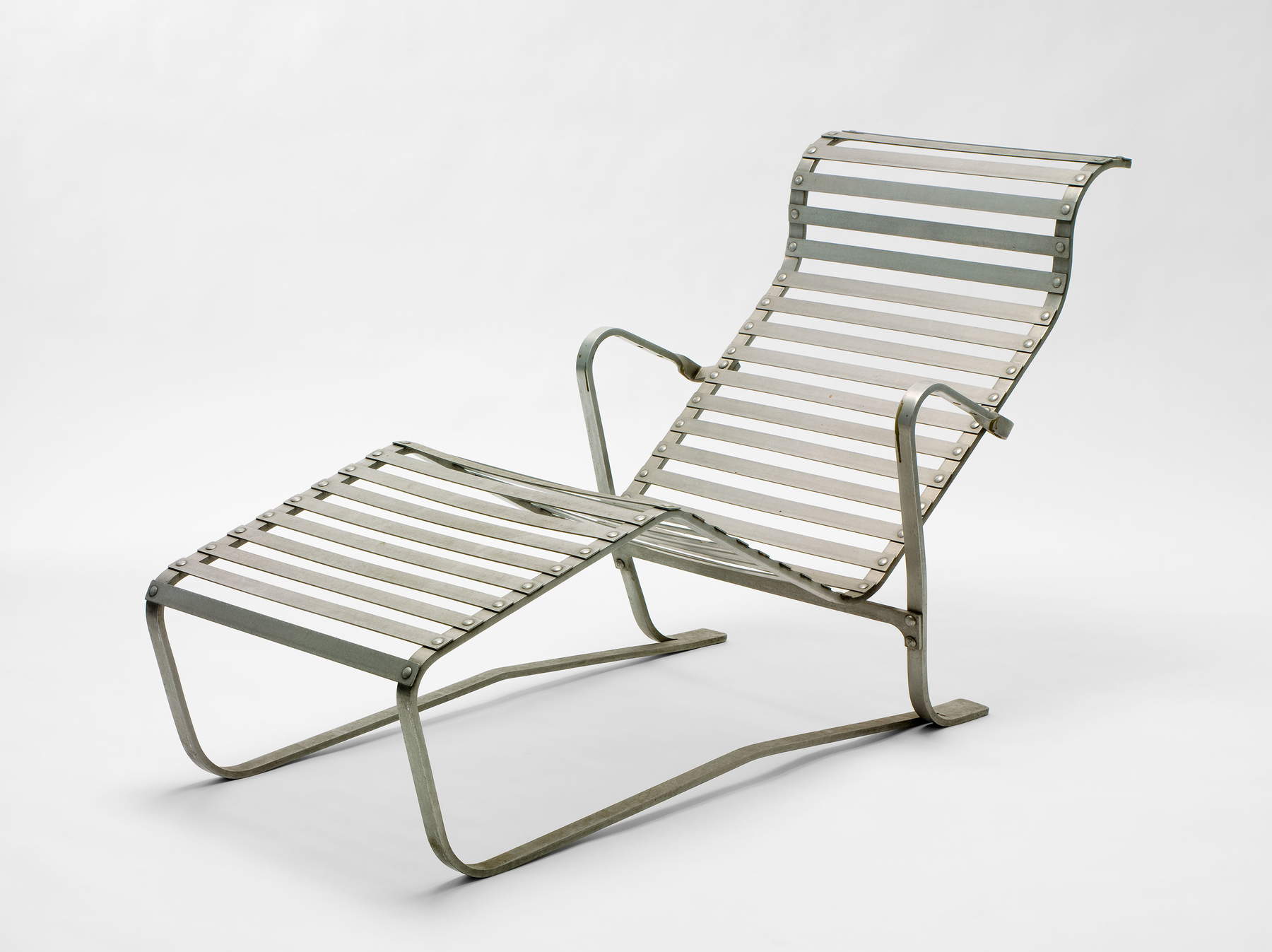 |
| Marcel Breuer, Aluminum Lounger (1933; Zurich, Museum für Gestaltung Zürich, Design Collection, ZHdK). Ph. Credit Franz Xaver Jaggy and Umberto Romito |
Finally, the last exhibition, also running from Oct. 23, 2020 to June 20, 2021, is Total Space, curated by Damian Fopp and Matylda Krzykowski: with the slogan “immerse, explore, participate,” the exhibition at the Museum für Gestaltung Zurich aims to invite visitors to dive into what is described as an “experience of space that engages all the senses.” Five design studios have created immersive spaces that respond to the expansion of virtual formats that have literally exploded in the wake of the Covid-19 pandemic: yet, highly elaborate set designs and large installations still continue to captivate museum visitors around the world. And the virtual, in this sense, steps in to enrich on-site exhibitions with new meaning. The Total Space exhibition thus aims to nullify the distance between visitors and exhibits, allowing audiences to immerse themselves in spaces of multilevel experience.
The five invited design studios have each created their own “total space”: a variety of very different approaches emerge, thus promising to fascinate and surprise visitors with radically different experiences. Zurich-based duo Kueng Caputo play at home with a forest of columns caught in the various stages of their work, from the design process to the finished product, to make the process itself visible and tangible. Chicago-based studio Luftwerk, on the other hand, chose to modulate light, form and color to shape a living but meditative environment that contracts and expands, knowing continuous transformations. The Soft Baroque team from London, on the other hand, offers a response to the aseptic environment of the so-called “white cube” (the typical white museum room) through a totally unbalanced space that rotates seamlessly. Berlin-based studio Sucuk und Bratwurst has created an oversized children’s bedroom, a surreal installation that breaks down the boundaries between real and virtual. Finally, Zurich-based duo Trix and Robert Haussmann present a mirror room, where visitors can experience the infinite spatial depth created by the play of reflections triggered by the mirrors themselves.
The exhibition is designed so that visitors do not need explanatory texts, but in case they do, it is possible to delve deeper into the practice of the five design studios in a central room set up like a sort of giant Wikipedia article inside which one can walk. Additional rooms serve as footnotes to illustrate the term Total space with examples from the past and present.
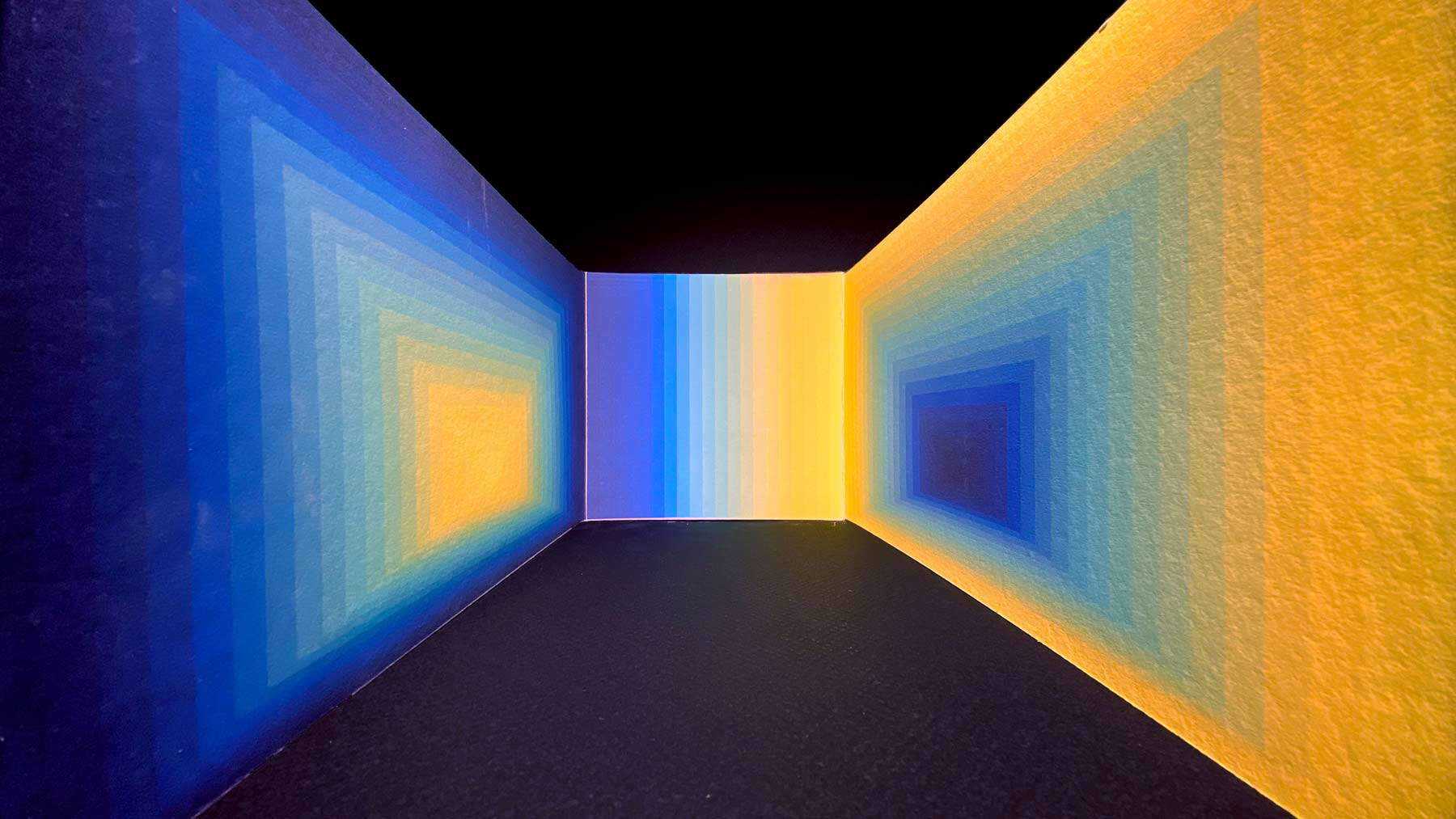 |
| Luftwerk, Total Space (Chicago, 2020) © Luftwerk |
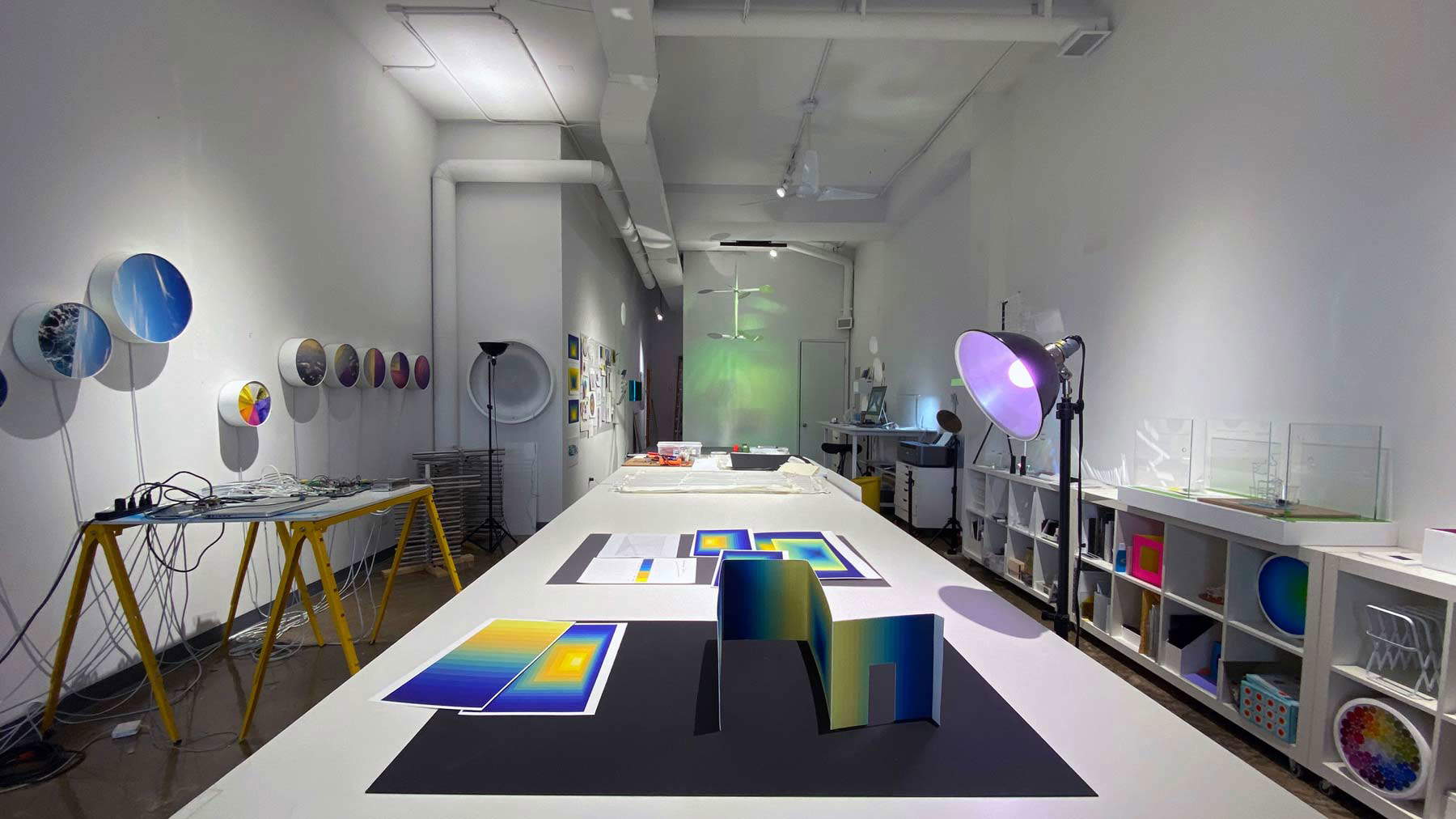 |
| Luftwerk, Studio in Chicago (Chicago, 2020) © Luftwerk |
The exhibitions can be visited during the opening hours of the Museum für Gestaltung Zurich: Thursday through Sunday 10 a.m. to 5 p.m., Wednesday evening opening until 8 p.m. (in 2021, however, the evening opening day becomes Thursday), closed Mondays, December 24 and 25, and January 1. Anti-Covid measures must be observed for the visit: stay at home in the presence of any symptoms, wear a mask during the entire time of the visit (for visitors over 12 years of age), maintain the interpersonal distance of one and a half meters, sanitize your hands, provide your contact information in case of participation in events. All information can be found on the Museum für Gestaltung website.
 |
| From Lee Miller to the great design of the 20th century. Three exhibitions at the Museum für Gestaltung in Zurich. |
Warning: the translation into English of the original Italian article was created using automatic tools. We undertake to review all articles, but we do not guarantee the total absence of inaccuracies in the translation due to the program. You can find the original by clicking on the ITA button. If you find any mistake,please contact us.



























